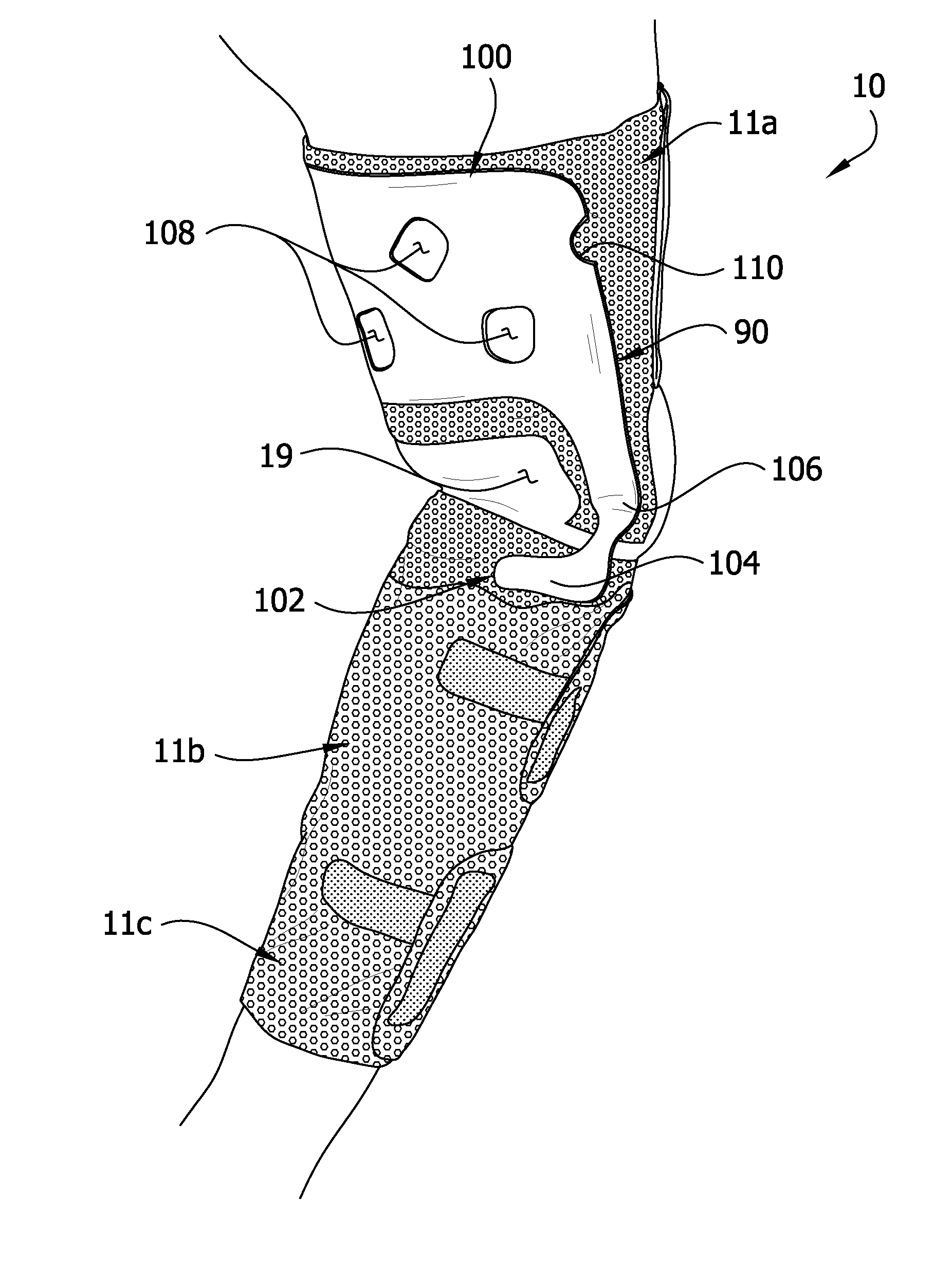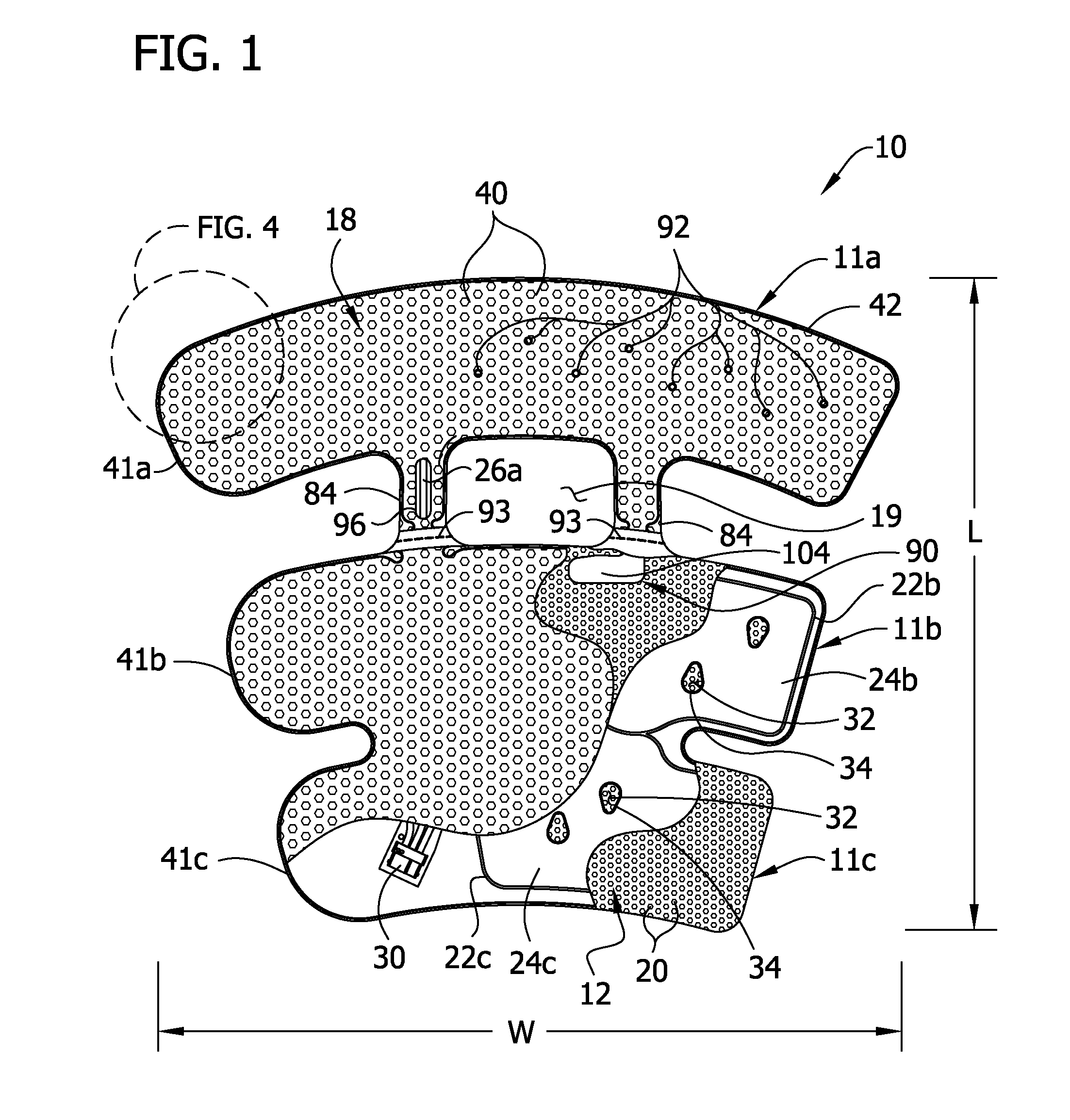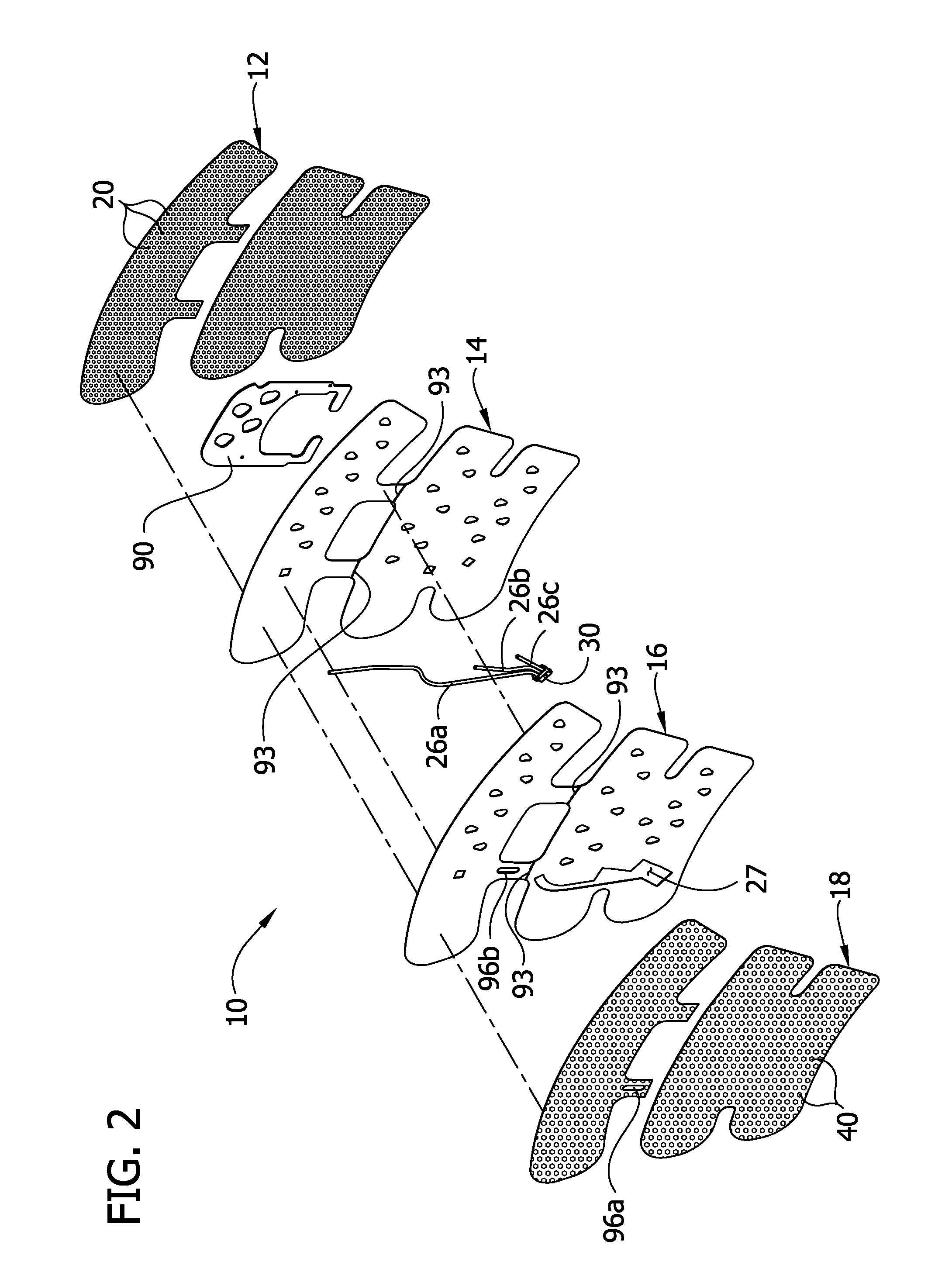Compression sleeve with improved position retention
a compression sleeve and position retention technology, applied in the field of compression devices, can solve the problems of ineffective compression therapy, discomfort, and difficulty in patient movemen
- Summary
- Abstract
- Description
- Claims
- Application Information
AI Technical Summary
Benefits of technology
Problems solved by technology
Method used
Image
Examples
second embodiment
[0032]In a second embodiment, an insert 90′ (FIG. 9) comprises a bridge having leg portions 106′ having no reduced width sections. The insert 90′ otherwise functions substantially the same as insert 90.
[0033]In the illustrated embodiment, the thigh section 11a is removable from the remainder of the sleeve 10 to convert the sleeve from thigh length to knee length. In particular, the proximal portion of the sleeve 10 that includes the proximal bladder 24a and the bridge members 84 are removable from the remainder of the sleeve. Tear lines comprising perforation lines 93 in the intermediate layers 14, 16, extend transversely across the intermediate layers adjacent to where the bridge members 84 join thigh section 11a to the calf and ankle sections 11b, 11c. In a preferred embodiment, the removal is destructive and permanent. It is understood that the sleeve may include one tear line or more than two tear lines within the scope of the invention. It is also understood that the shapes of ...
first embodiment
[0040]Similarly, as shown in the insert 90, the leg portions 106 have the reduced width section 112 which makes it easier to pull the leg portions 106 and foot portions 104 from the knee section 11b of the sleeve 10. In addition to accommodating the terminal securement lines 95a, 95b, the reduced width portion 112 reduces the amount of material of the insert 90 at and below the bridge members 84. This construction makes it easier to remove the leg portions 106 and foot portions 104, from the knee section 11b of the sleeve 10. Thus, if the thigh section 11a and bridge members 84 are removed from the garment 10, the perforations 93 (see, FIG. 2a) are torn part way. The reduced width section 12 and extensions 104 are pulled out from the calf section 11b, and tearing of the perforation 93 is completed to separate the thigh section 11a and bridge members 84 from the remainder of the garment 10. Other ways of achieving separation are contemplated. For example, the leg portions of an inser...
PUM
 Login to View More
Login to View More Abstract
Description
Claims
Application Information
 Login to View More
Login to View More - R&D
- Intellectual Property
- Life Sciences
- Materials
- Tech Scout
- Unparalleled Data Quality
- Higher Quality Content
- 60% Fewer Hallucinations
Browse by: Latest US Patents, China's latest patents, Technical Efficacy Thesaurus, Application Domain, Technology Topic, Popular Technical Reports.
© 2025 PatSnap. All rights reserved.Legal|Privacy policy|Modern Slavery Act Transparency Statement|Sitemap|About US| Contact US: help@patsnap.com



